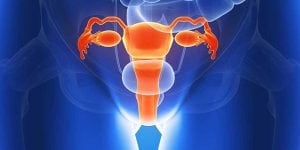A medical procedure known as gamete intrafallopian tube transfer, or GIFT, may help women overcome infertility.
Gamete Intrafallopian Tube Transfer Overview
During the GIFT procedure, a woman’s eggs are removed and mixed with sperm to become fertilized. Once that process is complete, the newly fertilized eggs are promptly placed inside the fallopian tubes.
GIFT Steps
The GIFT process requires the completion of several steps including the following:
- Fallopian Tube Examination – The GIST procedure will not work unless at least one of the intended recipient’s fallopian tubes is healthy and functioning properly. The examining physician will perform the exam with X-rays and laparoscopes.
- Egg Retrieval – Provided the prospective recipient’s fallopian tubes are present and healthy, the surgeon performing the procedure will then use a laparoscope to extract eggs from her ovaries.
- Sperm Sample Collection – After the intended recipient’s eggs are extracted, her male partner donates a sperm sample to the medical institution performing the procedure.
- Eggs and Sperm Are Joined – Once the sperm sample has been collected, the substance is combined with the prospective recipient’s eggs in an object called a catheter.
- Fallopian Tube Insertion – The performing surgeon uses the catheter to insert the fertilized eggs into the fallopian tubes.
- Medication Administration – Once the delivery process is complete, the recipient is given medications designed to strengthen her uterine lining.
Suitable Subjects for GIFT Treatment
GIFT treatment is typically recommended for couples who have experienced conception difficulties for a variety of reasons and for whom other medical fertility therapies have proven unsuccessful.
Potential Advantages

- GIFT Treatment Is Less Complicated – In most instances, GIFT recipients do not require hospitalization. Though the procedure is invasive and will be performed inside a fertility clinic, recovery time typically ranges from only a few to at most eight hours.
- Couples Are Not Forced to Face Ethical Dilemmas – In other forms of medical fertility procedures, individuals might be afforded the opportunity to learn if potential embryos are damaged or contain other flaws that might precipitate birth defects or other health issues in the fetus. As a result, couples might choose not to go through with the procedure or choose only the healthiest samples.
Differences Between GIFT and Zygote Fallopian Transfer
Another relatively common and popular form of medical fertility procedures used is known as zygote fallopian transfer, or simply ZIFT. Though the procedures share some similarities, there are noticeable differences. Arguably, the major discrepancy between the two procedures is that the eggs and sperm are joined together inside a laboratory and inserted into the fallopian tubes after the eggs have become zygotes.
GIFT and In-Vitro Fertilization
In-vitro fertilization, sometimes abbreviated merely as IVF, is another type of medical fertility-boosting procedure. Like GIFT and ZIFT, IVF involves combining eggs and sperm. However, unlike GIFT and like zygote transferal, IVF is performed inside a laboratory. That said, the major difference between IVF and the other types of medical fertility processes is that the fertilized eggs are placed directly into the intended recipient’s uterus instead of the fallopian tubes.
GIFT Success Rates
Success will depend on many different factors, most notably the recipient’s age and general health. Typically, younger women tend to enjoy better success. Recipients age 38 and younger enjoy a pregnancy rate of 38 percent. However, individuals age 39 and older successfully become pregnant roughly 24 percent of the time.
Considerations
While GIFT has proven fruitful for many, healthcare professionals and pregnancy experts request that prospective GIFT recipients understand that the procedure can be quite costly, time-consuming and invasive. Therefore, experts further recommend that intended recipients discuss it with their doctors and explore all potential fertility-boosting options.




